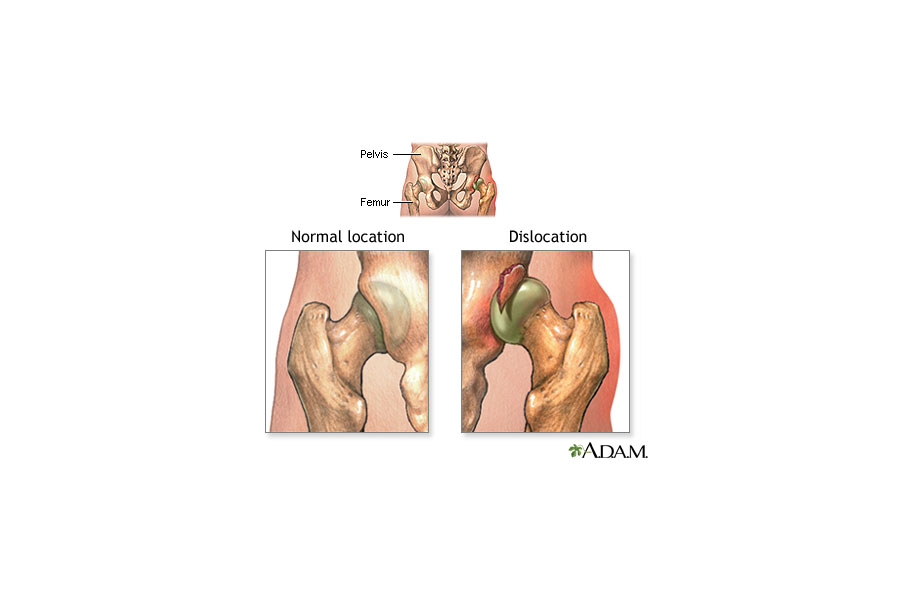Traumatic Hip Dislocation
A dislocation of the hip occurs when the femur bone is displaced from the socket of the pelvic bone. A traumatic dislocation is not an injury that occurs easily. It requires a direct force of high-energy to the thigh. Collision or impact forces causing dislocations can involve a serious fall; an injury from a high-impact sport such as football, rugby, basketball or downhill skiing; a motor vehicle accident, or MVA; or by a pedestrian being hit by a vehicle. Nearly 70% of all hip dislocations occur as a result of a MVA. More than 70% of all hip dislocations are considered posterior dislocations. This occurs when the hip and knee are flexed and impact occurs from behind. (Gammons, Malanga, Talavera, Whitehurst, & Ho, 2014)
Intervention
Reducing the dislocation without surgery involves medical personnel manipulating the affected leg and hip in order to realign the ball back into the hip socket. A successful closed reduction requires the patient to be adequately sedated; no bony fracture pieces lying within the socket; and no damage done to the sciatic nerve. If a closed reduction is not a possibility or is unsuccessful after multiple attempts, surgery must be performed to realign the joint and repair any additional injuries. Reducing a hip dislocation is an emergent medical intervention that must be performed as soon as possible and ideally within 6 hours after the injury to give the patient the best chance of having a reduced risk of a serious complication called avascular necrosis. (Dwyer, John, Singh, & Mam, 2006)
For our civil newsletter and blog this month we are reviewing traumatic hip dislocations and delayed reduction. The blog topics for this month are:
- Hip Anatomy (3/2/15)
- Traumatic Dislocation (3/9/15)
- Avascular necrosis (3/16/15)
- Legal Implications (3/23/15)
Note: To see all posts in this topic, click here











